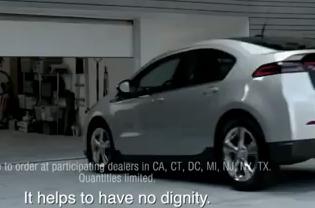 Each year, U.S. taxpayers spend billions to subsidize affordable housing for low-income Americans. It’s an important part of the social safety net we’ve built to keep families and the elderly from falling through the cracks. But there’s a problem: A lot of that housing has been built far away from public transit, schools, and jobs. As a result, residents drive long distances, burning gobs of gas — and huge holes in their wallets — in the process.
Each year, U.S. taxpayers spend billions to subsidize affordable housing for low-income Americans. It’s an important part of the social safety net we’ve built to keep families and the elderly from falling through the cracks. But there’s a problem: A lot of that housing has been built far away from public transit, schools, and jobs. As a result, residents drive long distances, burning gobs of gas — and huge holes in their wallets — in the process.
For many residents of affordable housing, transportation and housing costs eat up over half of their income. For a struggling family, this can make healthy food, higher education, and health care seem as far-fetched as President Newt.
Lately, however, there’s been a push to alleviate transportation costs for low-income families. Efforts on the state level show some promise, and officials at the federal level are expressing interest as well.
A growing number of forward-thinking state governments are already factoring in transportation costs when awarding tax breaks and funding for projects, giving preference to housing that is close to public transit. In the Chicago region, for example, 85 percent of the housing funded by the Illinois Housing Development Authority (IHDA) is now located within walking distance of bus or train stations.
Still, as a new study by the nonprofit Center for Neighborhood Technology (CNT) shows, policy changes like those in Illinois take time to have an effect. According to the study, the new policy favoring transit-friendly locales has yet to significantly reduce transportation costs for low-income residents, which range from $750 to $1,000 a month for a family making $3,445 a month, or 80 percent of the area median income.
Part of the reason is that transit systems are not up to snuff. Living near a train station is great, but you’re less apt to ride the train if it only passes through a couple times a day. Ditto with buses that don’t get you where you need to go when you need to get there. In fact, during the study period, from 2001-2008, transit service to neighborhoods with IHDA-financed housing dropped 24 percent.
But “it’s not all about transit,” says CNT’s transportation and community development program director, María Choca Urban. In fact, of the key characteristics that correlate with low transportation costs, transit is the least important. More important than access to mass transit, are densely developed, compact neighborhoods with lots of amenities like grocery stores, schools, and jobs, Urban says — in other words, communities where residents don’t have to travel long distances to meet their basic needs.
Jobs, you say? Dense neighborhoods? We’ve been subsidizing sprawl for decades, and the recession has made jobs few and (literally) far between. If Urban is right, and we’re serious about building truly affordable housing, we’ve got our work cut out for us.
The slow progress on the state level has not deterred officials at the federal Department of Housing and Urban Development (HUD) from considering similar measures, however. HUD, which provides rental assistance for low-income families as well as grants and tax credits to affordable housing developments, is in the process of documenting transportation costs, neighborhood by neighborhood. HUD’s model is loosely based on an index developed by CNT, which uses transportation costs to determine the “true affordability of housing based on its location.”
Shelley Poticha, director of the Office of Sustainable Housing and Communities, says that policy changes like the one in Illinois are one possible tool. Another idea being floated is a labeling system much like what you would see if you were shopping for a new water heater. Instead of a sticker displaying energy costs, you would find information about the transportation costs associated with a house. Families receiving rental assistance could then compare different residences to find a location that fits within their budget.
“I think that consumers are really savvy and if we make this information available, easy to use, and free, then it seems like something the market will pick up,” Poticha says. To illustrate her point, she references Walk Score, which a few years ago began ranking different areas of San Francisco on how many amenities were within walking distance. Within about a year, for sale signs in front of houses were listing their walk scores.
Poticha admits that remaking policy and changing tools is a difficult step that takes time, but she is optimistic about HUD’s current direction. “What I’m seeing is phenomenal demand at the grassroots level,” she says. Across the nation, people are “getting more and more vocal about the changes they want to see.”
Helping low-income families make smarter location decisions and nudging affordable housing developers in the right direction would certainly help. But if the Chicago study is any indication, ditching the long car commute (via car, train, or otherwise) and creating walkable, tight-knit communities is the ultimate goal — and one that we won’t achieve for a good, long while.



